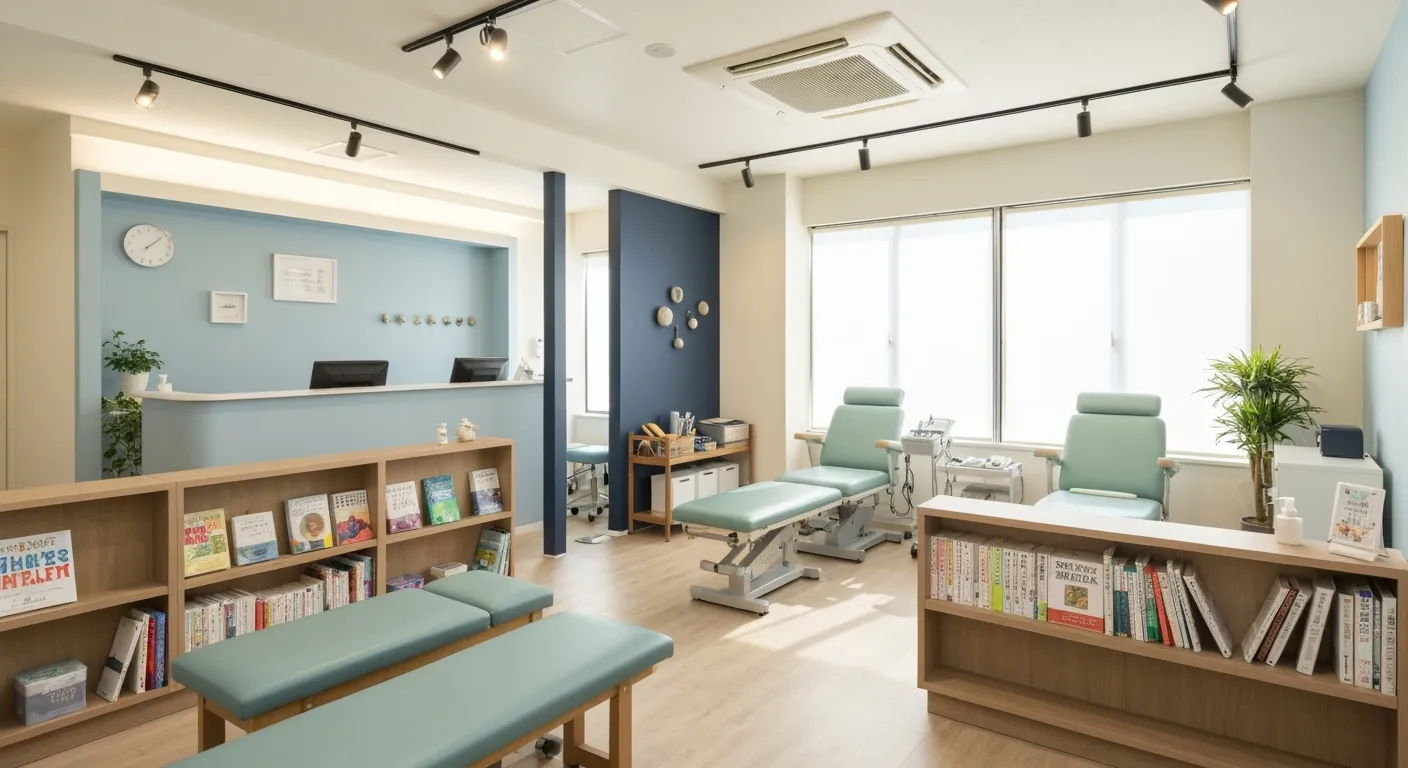Choosing the Right Chiropractor: Key Factors to Consider Before Your First Appointment
October 6, 2025
8 min

Introduction to Choosing the Right Chiropractor
Selecting the right chiropractor is a crucial step toward effective musculoskeletal health care. This guide walks you through essential considerations, from understanding chiropractic credentials to preparing for your first appointment, helping you make a confident and informed choice for your health and well-being.
Key Criteria and Factors to Consider When Choosing a Chiropractor

Choosing the right chiropractor involves careful consideration of several important factors to ensure effective and safe treatment. First and foremost, verifying credentials and licensure is essential. This includes confirming that the chiropractor has graduated from an accredited chiropractic college and holds a valid license issued by the state licensing board. Consulting official websites or licensing organizations can help verify their standing and check for any disciplinary actions (Choosing a chiropractor with proper training).
Experience and specialization are also crucial. An experienced chiropractor with a proven track record treating your specific condition—such as back pain, headaches, or sports injuries—can improve treatment outcomes (Importance of chiropractor experience). Some chiropractors pursue specialized training or certifications in areas like pediatrics, sports medicine, or neurological conditions, which can be beneficial depending on your needs (Chiropractic specialties).
Treatment methods vary among practitioners. During an initial consultation or phone call, ask about the techniques they use, such as spinal manipulation, mobilization, massage, or additional therapies (Chiropractor techniques and patient comfort). Ensuring their approach aligns with your comfort levels and preferences is vital, as it enhances cooperation and trust (Questions to ask your chiropractor).
Recommendations from trusted sources can provide valuable insights. Asking your primary care doctor, family, or friends for referrals can lead to reputable options (Getting chiropractor recommendations). Reading patient reviews online also helps gauge the quality of care, office environment, and provider professionalism (Patient reviews of chiropractors).
Additionally, consider practical factors like the clinic’s location, office hours, and whether they accept your insurance (Location and hours of chiropractor clinics, Insurance coverage for chiropractic care). Convenience influences the likelihood of maintaining consistent visits, which is key for effective treatment (Choosing the right chiropractor tips). Clarify the cost structure upfront and verify if your insurance plan covers the treatments offered (Insurance coverage and payment options).
Ultimately, an ideal chiropractor develops personalized treatment plans based on your specific health issues and communicates openly about the process (Importance of good communication with a chiropractor). Feeling comfortable and supported during visits fosters a positive therapeutic relationship, which significantly impacts recovery and satisfaction (Factors to consider when choosing a chiropractor).
Evaluating and Selecting a Chiropractor Before Treatment

How can you evaluate and select a chiropractor before beginning treatment?
Choosing the right chiropractor involves careful research and assessment of several important factors. Start by verifying their credentials, including proper licensure, certifications, and checking for any disciplinary actions. This information is accessible via state licensing boards or reputable online platforms like Healthgrades or the board’s official site.
Seeking recommendations from trusted sources such as your primary care physician, family, friends, or colleagues can provide valuable firsthand insights. Reading patient reviews — whether on online review sites or social media — helps gauge overall patient satisfaction, treatment effectiveness, and office environment. For more on this, see Reviews and recommendations for chiropractors.
Scheduling an initial consultation or phone interview allows you to interview the chiropractor. During this conversation, assess their communication style, professionalism, and willingness to answer questions. Be sure to discuss your specific health concerns and confirm their familiarity with treating conditions similar to yours. For helpful questions and consultation tips, see Questions to ask your chiropractor.
Practical considerations include the clinic’s location, office hours, and whether they accept your insurance plan. Feel comfortable discussing your symptoms and health history, and ensure the chiropractor’s approach aligns with your preferences, whether they emphasize manual adjustments, soft tissue therapies, or holistic care. Learn more about chiropractor techniques and patient comfort and chiropractic treatment methods.
Building trust and establishing good communication are vital. Feel free to ask about their experience, approaches to treatment, and any specialties they hold. This helps ensure you select a provider who is qualified, trustworthy, and a good personal fit. For guidance on factors to consider when choosing a chiropractor and effective communication with a chiropractor, see above resources.
Finally, consider logistical needs such as appointment availability and costs. A chiropractor who meets your practical and health-related needs increases the likelihood of successful, ongoing care and a positive treatment experience.
Essential Questions to Ask Your Chiropractor Before Treatment

Before initiating chiropractic care, it’s crucial to ask comprehensive questions to ensure the provider’s competence and suitability for your needs.
Qualifications and Licensing: Verify that the chiropractor holds a valid license and has completed an accredited Doctor of Chiropractic (DC) program. Ask about their educational background and any specialty certifications they possess (Doctor of Chiropractic degree requirements, Chiropractor Educational Requirements, Becoming a chiropractor, Qualifications of a Chiropractor).
Experience with Specific Conditions: Inquire about their familiarity and success in treating your particular issue, such as back pain, headaches, or sports injuries. Knowing their track record can give confidence in their expertise (Experience in treating specific conditions, Chiropractor Experience and Complications, Importance of chiropractor experience).
Treatment Methods and Duration: Clarify which techniques they use, such as spinal manipulation, mobilization, or other therapies. Ask how long each session lasts, how many sessions are typically needed, and the estimated overall timeline for recovery (Chiropractic techniques and patient comfort, Chiropractic adjustment techniques, Chiropractic treatment overview, Treatment duration expectations).
Risks and Diagnostic Testing: Discuss potential risks or side effects associated with their treatment plans. Find out if diagnostic tests like X-rays are necessary beforehand and under what circumstances they are recommended (Risks of chiropractic treatment, Use of X-rays in chiropractic care, Chiropractic diagnostic tools, Post-treatment side effects).
Costs and Insurance Coverage: Confirm the cost per visit and whether your insurance plan covers chiropractic services. It’s helpful to understand payment options, including whether they offer plans or packages (Insurance coverage and payment options, Insurance coverage for chiropractic care, Chiropractic appointment cost and payment options).
Expected Outcomes and Recovery Timeline: Ask what results you can realistically expect, how quickly improvements might occur, and what your recovery process will involve (Expected outcomes of chiropractic care, Chiropractic treatment progress and recovery, Recovery after chiropractic adjustments).
Having clear answers to these questions helps you choose a qualified chiropractor who can provide safe, effective, and personalized care, aligned with your health goals.
What to Expect and How to Prepare for Your First Chiropractic Appointment

Pre-appointment Preparation Including Medical Records and Clothing
Prior to your first visit, it is advisable to gather any relevant medical records, including previous treatment notes and diagnostic imaging such as X-rays or MRIs. This information can provide the chiropractor with a comprehensive understanding of your health history.
Wearing loose, comfortable clothing is recommended to allow easy access to the areas being examined or adjusted. Arriving well-hydrated and relaxed can also enhance your comfort during the process (Preparation Tips for Your First Chiropractic Appointment).
Initial Consultation and History Review
Your first appointment typically begins with a detailed consultation. The chiropractor will ask about your medical history, current symptoms, and lifestyle factors that may contribute to your condition. Expect to discuss the onset, duration, and nature of your pain or discomfort.
This stage helps to identify potential causes and determine if chiropractic care is appropriate for your needs (Initial chiropractic consultation).
Physical and Neurological Examinations
The chiropractor will perform a physical assessment that includes posture analysis, testing your range of motion, muscle strength, tone, and neurological reflexes. These assessments are essential for pinpointing misalignments or nerve irritations.
Similar to other healthcare exams, this process helps the chiropractor formulate an effective treatment plan (Physical examination at chiropractor).
Possible Diagnostic Imaging Like X-rays
In cases of recent injury, trauma, or suspected structural issues, the chiropractor might recommend X-rays or other imaging modalities. These diagnostic tools offer detailed views of the spine and joints, aiding in accurate diagnosis.
It’s important to note that X-rays are typically only ordered when medically necessary, in line with current guidelines.
Initial Treatment Procedures and Sensations
The primary treatment often involves spinal or joint adjustments. Chiropractors use their hands or small instruments to apply controlled pressure, which may produce a popping or cracking sound—a normal release of gas from the joints.
The procedure is generally painless, and many patients report feeling relief, increased mobility, and reduced muscle tension immediately afterward.
Post-treatment Effects and Follow-Up Plans
Following your session, some mild soreness or fatigue may occur, similar to the sensations after a workout. These effects are usually short-lived.
Your chiropractor will discuss a tailored follow-up schedule, which may include additional adjustments, therapeutic exercises, or supportive therapies (Personalized Chiropractic Treatment Plans). The number and frequency of visits depend on your specific condition and response to treatment.
Being prepared and open to discussion with your chiropractor can help ensure a positive first experience and set the stage for effective ongoing care (Questions to Ask During Chiropractor Consultations).
Educational, Licensing, and Professional Standards of Chiropractors

Becoming a qualified chiropractor requires navigating a comprehensive educational requirements for chiropractors and licensing pathway. Candidates typically begin with at least three years of undergraduate coursework in related fields such as biology, anatomy, or pre-med, often earning a bachelor's degree. The core of a chiropractor’s training involves completing a Doctor of Chiropractic (DC) degree from an accredited institution, which involves at least 4,200 hours of classroom and clinical study. The curriculum covers anatomy, physiology, diagnostic procedures, neurology, orthopedics, nutrition, and clinical techniques, including over 1,000 hours of supervised internships.
Upon graduation, graduates must pass the National Board of Chiropractic Examiners (NBCE) exams, consisting of four parts that test foundational sciences, clinical sciences, radiology, and case management skills. Additional state-specific exams may also be required before obtaining licensure. Licensed chiropractors must submit their transcripts, pass background checks, and pay licensing fees as part of regulatory compliance.
Continuing education (CE) is essential for license renewal, with requirements varying by state but generally including 20 to 40 hours of ongoing learning every year or two. This ensures practitioners remain current with clinical advancements and adhere to ethical guidelines. Reputable chiropractors can be identified by verifying their Doctor of Chiropractic degree from an accredited program and confirming their licensure via state licensing boards.
Professional memberships in organizations such as the American Chiropractic Association (ACA) or the International Chiropractors Association (ICA) demonstrate ongoing commitment to professional development and ethical standards. A truly qualified chiropractor listens carefully to patient needs, explains diagnoses and treatment options clearly, and develops personalized, evidence-based treatment plans.
In summary, chiropractors must meet strict educational, examination, and licensure standards while engaging in lifelong learning to ensure safe, effective, and ethical care. Patients can identify reputable practitioners by verifying credentials, seeking reviews and recommendations, and observing their communication and professionalism during initial consultations.
Making an Informed Choice for Your Chiropractic Care
Choosing the right chiropractor involves careful evaluation of credentials, communication, treatment approaches, and logistical factors to ensure you receive effective, personalized care. Asking the right questions and preparing for your first appointment can help you feel confident and comfortable. Understanding educational and licensing standards as well as recognizing qualities of reputable practitioners further ensures your safety and satisfaction. With thoughtful consideration and proactive engagement, you can establish a trusting partnership with a chiropractor who supports your journey to improved health and well-being.
Recent articles

Simple Lifestyle Adjustments to Maintain a Healthy Spine

Personalized Nutritional Counseling for Improved Health Outcomes

Exploring Non-Surgical Treatments for Spine-Related Conditions

An Introduction to Spinal Decompression for Sciatica Patients

Transformative Success Stories: Patient Experiences with Chiropractic Treatments

Why Chiropractic Care Is Essential for Back Pain Relief

Addressing Underlying Causes Versus Symptom Management in Pain Care

The Role of Nutrition in Enhancing Chiropractic Treatment Effectiveness

Sciatica Treatment Options: Is Spinal Decompression Right for You?

Lifestyle Tips to Maintain a Healthy Spine and Prevent Back Issues

The Synergy Between Physiotherapy and Chiropractic Treatments

What Happens During Your Initial Chiropractic Consultation

Effective Corrective Exercises for Sustainable Pain Management

Taking a Root Cause Approach to Chronic Pain Management

Holistic Pain Management Techniques Without Surgery

How Patient Success Stories Validate Chiropractic Care Benefits

Spinal Decompression: Innovative Treatment for Sciatic Nerve Pain

Spinal Decompression Therapy: A Non-Invasive Approach to Sciatica Relief

Exploring Holistic Approaches Beyond Surgery for Pain Relief

Practical Lifestyle Advice to Support a Healthy Spine Every Day

Corrective Exercise Routines Designed for Long-Term Pain Prevention

Real Patient Stories: Overcoming Chronic Pain with Chiropractic Care

Lifestyle Changes That Promote a Healthy Spine and Prevent Injury

How Addressing the Root Cause of Pain Leads to Lasting Relief

Non-Surgical Holistic Therapies to Manage Chronic Pain Effectively

Nutritional Counseling's Impact on Physical Health and Healing

Benefits of Regular Chiropractic Care for a Stronger Back

Your First Chiropractic Visit: What to Expect and How to Prepare

Patient Experiences: How Chiropractic Care Transformed Their Lives

Exploring Holistic, Non-Surgical Options for Pain Management

Combining Physiotherapy with Chiropractic Treatments for Enhanced Recovery

Holistic Treatments That Offer Alternatives to Surgery for Pain Relief

Corrective Exercise Strategies for Long-Term Spine Health

How Physiotherapy Complements Chiropractic Adjustments for Better Outcomes

First-Time Chiropractic Visitors: What You Should Know

Understanding the Importance of Treating Pain at Its Source

Adopting Lifestyle Changes to Support Your Spine's Wellness

Utilizing Physiotherapy to Enhance Chiropractic Treatment Outcomes

The Key Advantages of Chiropractic Care for Back Pain Sufferers

Why Focusing on Root Causes Improves Pain Treatment Success

Corrective Exercises That Promote Lasting Pain Relief and Mobility

Sciatica Relief Through Targeted Spinal Decompression Techniques

Preparing for Your First Chiropractic Appointment with Confidence

Healthy Lifestyle Habits for Maintaining Spinal Alignment

Success Stories Highlighting Chiropractic's Role in Pain Recovery

Top Benefits of Chiropractic Care for Chronic Back Pain

Nutrition Tips to Boost Your Overall Wellness and Recovery

How Chiropractic Care Alleviates Back Pain Naturally

How Nutritional Counseling Supports Overall Wellness and Spine Health

Step-by-Step Guide to Your First Visit with a Chiropractor

Using Nutrition to Support Chiropractic and Overall Wellness

Integrating Physiotherapy in Your Chiropractic Healing Journey

How Physiotherapy Complements Chiropractic Adjustments for Faster Healing

Lifestyle Tips for Maintaining a Healthy Spine and Preventing Back Pain

Heartwarming Patient Testimonials Highlighting Chiropractic Success

How Proper Nutrition Supports Chiropractic and Physiotherapy Treatments

Combining Physiotherapy and Chiropractic Treatments for Optimal Recovery

Why Chiropractic Treatments Are Effective for Managing Back Pain

Choosing a Chiropractor: Tips for Finding a Trusted Provider

Integrating Physiotherapy and Chiropractic: Benefits and What to Expect

How Tailored Corrective Exercises Can Aid in Pain Management

Chiropractic Care: A Proven Solution for Alleviating Back Pain

What to Expect at Your First Chiropractic Visit: A Comprehensive Guide

The Importance of Root Cause Analysis in Effective Pain Management

The Role of Corrective Exercises in Sustaining Pain-Free Living

Combining Chiropractic and Physiotherapy for Comprehensive Pain Relief

How Addressing Underlying Causes Improves Pain Treatment Effectiveness

Maintaining Spinal Health Through Lifestyle Changes and Preventive Care

Understanding the Benefits of Chiropractic Adjustments for Back Pain Sufferers

Spinal Decompression Therapy: A New Hope for Sciatica Relief

Lifestyle Recommendations to Support a Healthy Spine and Reduce Pain

Choosing the Right Chiropractor: Key Factors to Consider Before Your First Appointment

Non-Invasive Treatment Alternatives: A Holistic Approach to Pain Relief

Corrective Exercises to Support Long-Term Relief from Chronic Pain

Exploring Non-Surgical Approaches to Spine Health and Wellness

Tips for Daily Habits That Keep Your Spine Strong

Success Stories: How Chiropractic Treatments Changed Lives

Why Focusing on the Root Cause of Pain Leads to Better Outcomes

Nutritional Counseling and Its Impact on Overall Wellness and Recovery

Patient Testimonials That Showcase the Power of Chiropractic Care

Preparing for Your First Chiropractic Appointment: What You Need to Know

Holistic Treatment Options: Beyond Surgery for Pain Relief

Holistic Pain Relief Methods That Avoid Surgery

Nutritional Strategies for Supporting Spine Health and Recovery

First Chiropractic Visit: What Happens and How to Prepare

Chiropractic Patient Success Stories: Inspiring Journeys to Wellness

Effectiveness of Spinal Decompression Therapy in Managing Sciatic Nerve Pain

Addressing Pain at Its Source: Why Treating the Root Cause Matters

Corrective Exercise Programs Designed for Long-Term Pain Prevention

Healthy Lifestyle Advice for Maintaining Spinal Alignment

Understanding Spinal Decompression as a Treatment for Sciatica Pain

Benefits of Chiropractic Care Specifically for Back Pain Relief

Understanding Gait Analysis in Physiotherapy

The Difference Between Muscle Soreness and Dysfunction

Workplace Stress Statistics: How Muscle Tension Impacts Productivity

How Physiotherapy Improves Mobility for Seniors

How to Communicate Pain Levels to Your Therapist Effectively

Physiotherapy Interventions for Balance and Fall Prevention

How Physiotherapy Helps Post-Surgical Recovery

